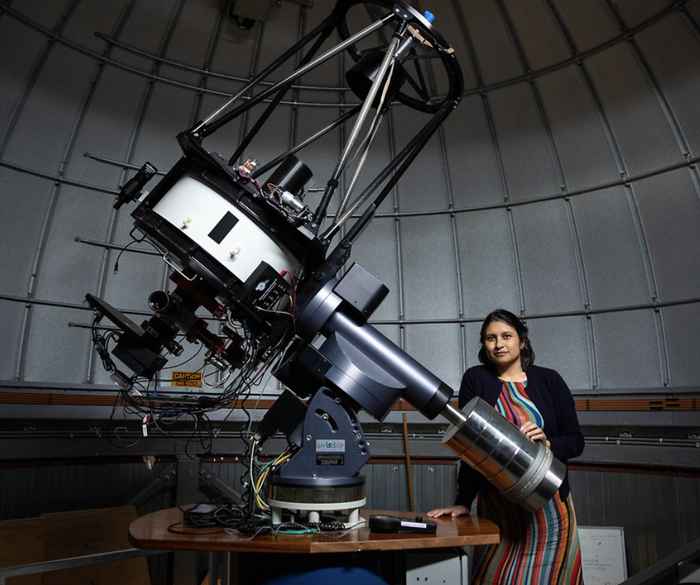Samaya Nissanke receives AAS HEAD 2024 Mid-Career Prize
12 February 2024

Samaya Nissanke’s research aims at understanding strong-field gravity astrophysics with compact objects — an essential ingredient in understanding the origin and evolution of the Universe. The evolution of our Universe on all scales, from the life-cycle of individual stars to the Universe in its entirety, is inextricably linked with gravity.
Specifically, Nissanke addresses fundamental questions such as: how do the laws of physics interact with each other in strong-field gravity? What is the fate of binary stellar evolution, and how can we detect electromagnetic and multi-messenger signatures, such as gravitational waves of their merger events? What is the physics that drives the most ubiquitous energetic events in the Universe — jets, accretion disks, mergers and explosions? What is the origin and evolution of the Universe?
In particular, Nissanke’s recent work aims to explain the physics driving the merger of compact object binaries (black holes, neutron stars and white dwarfs) and to map out the expansion history of the Universe by using electromagnetic and gravitational wave measurements. She is a member of the Virgo Collaboration, Einstein Telescope collaboration and LISA Consortium, and works with a slew of time-domain telescopes and surveys from the Zwicky Transient Facility, the Neil Gehrels Swift Observatory, the Vera Rubin Observatory’s LSST to LOFAR and the JVLA. Her work spans gravitational wave source modelling, data analysis, and multi-messenger astronomy, where she played a leading role in the remarkable discovery in 2017 of the merger of two neutron stars.
The HEAD Mid-Career Prize is awarded approximately every 18 months for a significant advance or accomplishment (observational or theoretical) in High Energy Astrophysics by an individual astrophysicist within fifteen years of receiving their PhD. The prize consists of $1500 in prize money and an invitation to present a plenary talk at the AAS-HEAD Divisional Meeting in the award year.
"I am extremely honored and humbled to receive this award and recognition, for which I share with my wonderful collaborators, mentors, and past and present group members, as well as my family and friends,” said Nissanke. “I am incredibly grateful for their support and for the opportunity to work in this fascinating field of gravitational wave multi-messenger astronomy. I am looking forward to future collaborations and work with inspiring individuals, and to contribute to the next endeavours in the field."